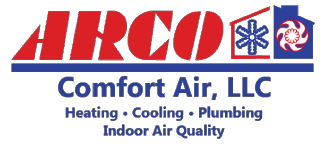Would You Leave Your Back Door Wide Open All Winter?
No? Well, failing to winterize your home for the coldest months of the
year is the equivalent of doing just that!
Winterizing your home is a major project that can save you bundles of money on your energy bills—if done correctly, that is. Not only can a properly winterized home maintain warm, comfortable indoor temperatures all winter long, but most winterized homeowners will save an average of
25% on their utility bills! Here are five handy tips to help seal off your cozy home from the biting cold of winter…
Invest in a home energy audit. A home energy audit will help your home reach its potential as a comfortable, energy efficient environment. An audit will point out problem areas—where you’re losing energy, where heat is escaping and what you can do to improve energy efficiency. The United States Department of Energy’s Weatherization Assistance Program recommends running one of these audits
once every year. The audit process is conducted by a professional technician and includes checking doors and windows for leaks, examining insulation, inspecting the furnace and ductwork, performing a blower door test and using an infrared camera to track down those leak sites invisible to the
naked eye.
Don’t forget about your plumbing. If you live in one of the colder regions of the country, you’ll want to be sure that your plumbing pipes aren’t vulnerable to the vicious cycle of freezing and thawing which can cause them to burst. The best way to weatherproof your plumbing is to shut off the supply of water
to outdoor spigots and sprinkler systems and then drain them. The idea is to get your vulnerable pipes (those closest to the outdoors) completely empty of water.
TIMBERRRRR! One of the biggest mistakes homeowners make each winter is failing to cut off dead or hazardous tree branches. Falling limbs (or whole trees for that matter) can seriously harm your home—roofs, siding, gutters, porch railings, decks and cars are all at risk, not to mention unsuspecting passersby. Before the dead of winter sets in, remove all overhanging limbs that could fall on your property. Get out there sooner rather than later—late summer or early fall and eliminate any branches that are hanging over the corner of your house or that look ready to bend, buckle and snap under
the weight of a winter’s worth of snow.
Seal, baby, seal! Inspect the condition of your roofing. Check for loose or missing shingles and/or gaps around your chimney. Then repeat the process for your home’s exterior. Keep an eye on common leak sites around windows, doors, and your foundation. Now that you’ve identified areas where water might
enter the home or ice could form on its exterior, address these problems immediately. Fill cracks with high quality caulk or install weather stripping. Trust us—stopping any leaks before they can present a problem promises a more comfortable, toasty and trouble-free winter.
Mind the Carbon Monoxide. Before the depths of winter arrive, make sure your carbon monoxide detectors are functioning correctly. This means testing the unit and replacing old
batteries, if necessary. There’s a lot you can do to make sure your home has a safe level of carbon monoxide. If you’re cooking with a gas range, use the fan and vent it outside. Here’s a tip: Adjust
the burners until the flame is blue—yellow-tipped flame will produce more carbon monoxide emissions. Also, don’t forget to have a professional heating technician give your furnace an annual check-up to preserve the safety and efficiency of your home this winter.
Call Arco today to learn more about how winterization and draft reduction
techniques can make both you and your wallet happier this winter!
